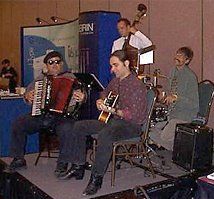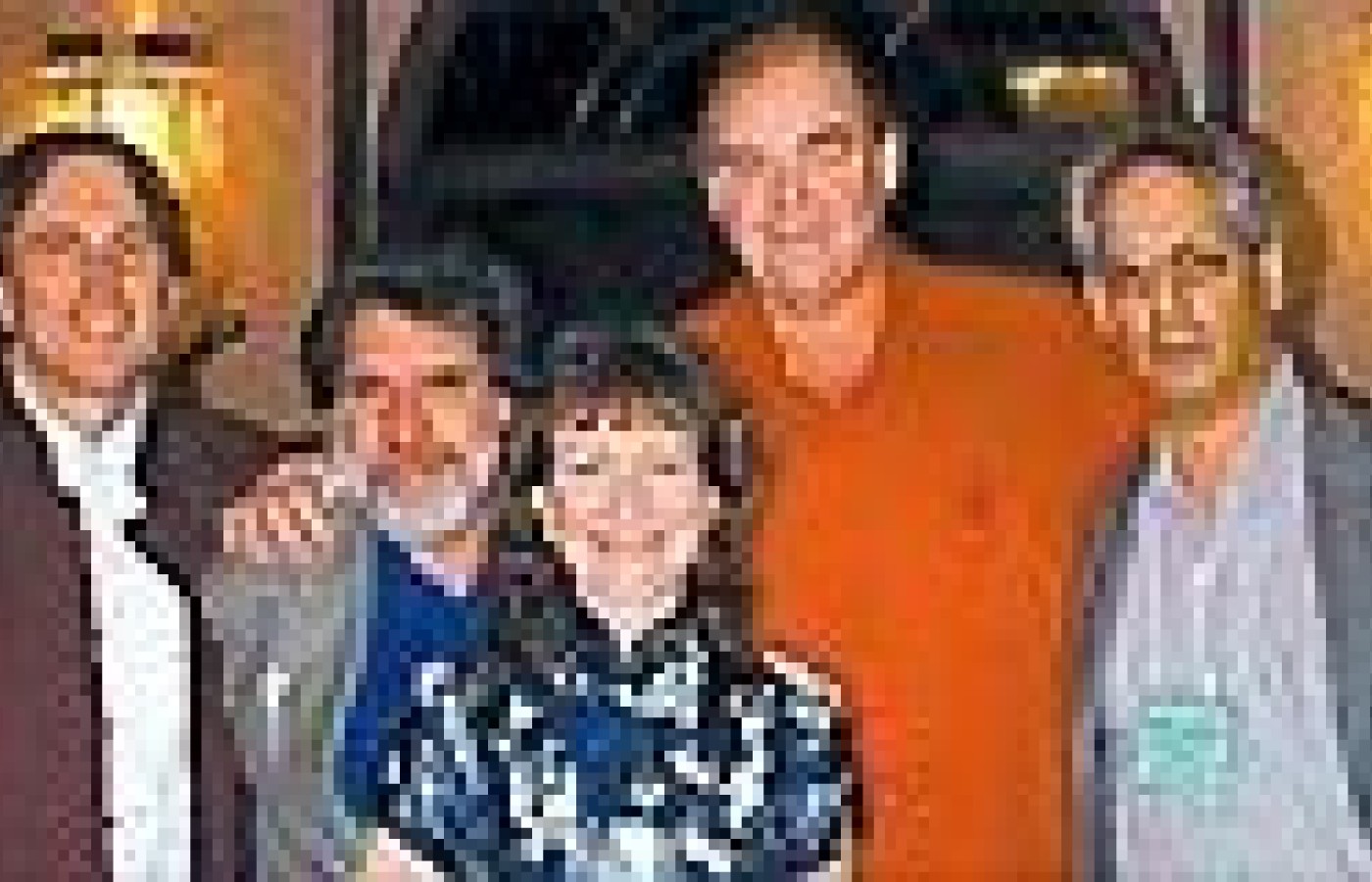Whether you accept it, avoid it or live somewhere in between, insurance coverage has become a defining issue for our profession. Patients increasingly expect to use their benefits, practitioners want to be compensated fairly for their time and expertise, and the system itself remains – at best – fragmented. The encouraging news is that coverage has expanded in meaningful ways. The challenging news is that reimbursement, across the board, remains inadequate.
Acupuncturists and Nurses: East Meets West
Amid blooming Texas spring wildflowers, the third annual Southwest Symposium took place in Austin, March 21-23, 2003. Over 200 participants, 25 exhibitors, and 12 speakers were present at this year's symposium. The Academy of Oriental Medicine at Austin (AOMA) and the University of Texas Health Science Center at San Antonio (UTHSCSA) School of Nursing co-hosted the symposium, held at the Omni Austin Hotel Southpark. The nursing school brought to the symposium a new group of attendees, including physical therapists, nurses, and some medical doctors, with continuing education units offered for the nurses and physical therapists.
Rosalie Tierney-Gumaer, director of nursing continuing education at the UTHSCSA School of Nursing, said, "Our nursing school wanted to provide nurses the opportunity to discuss and learn Oriental medicine's trends and theories. In the Western setting, our patients ask about acupuncture and Chinese herbs. We need to be knowledgeable about this medicine."

The Western medical tract at this year's symposium was designed for Western medical professionals who wanted to learn more about Oriental medicine. "One of our main missions at the Academy of Oriental Medicine is to bring Oriental medicine to the Western medicine community," said Dr. Jamie Wu, Chief Academic Officer at AOMA. "The sharing of knowledge ultimately helps the patient."
The conference began on Friday, March 21st, at 1 pm. AOMA Academic Dean Dr. Yuxin He spoke on autoimmune diseases, providing special emphasis in three areas: (1) traditional Chinese medicine (TCM) etiology and pathology, syndrome pattern and treating principles for autoimmune diseases; (2) analysis of commonly used herbs for autoimmune reaction and improvement of immune system function; and (3) clinical studies, research, and advancements in the treatment of common clinic autoimmune diseases such as systemic lupus erythematosis, rheumatoid arthritis, multiple sclerosis, autoimmune chronic active hepatitis, psoriasis, and sarcoidosis.
In a separate afternoon class, Dan Lobash, PhD, LAc, spoke on Korean hand theory as a microsystem for needle-free pain management. He told the participants how the entire body can be mapped on the hands. His goal was for those in attendance to learn enough to begin treating many forms of tension and pain using Korean hand theory.
In the Western medical tract, an introductory Chinese medicine class was taught by the popular tag-team of Harriet Beinfield, LAc, and Efrem Korngold, LAc, OMD. This popular couple, authors of the book Between Heaven and Earth, told how human beings are a microcosm of nature, a world in miniature. Every person has a unique terrain to be mapped, a resilient yet sensitive ecology to be maintained.
After a dinner break, many attendees stayed to hear acupuncturist and lawyer Leslie Lynn Myers give a talk titled "Ethics, Professional Responsibility, and the Practice of Oriental Medicine." Leslie is also the outgoing head of the Texas Association of Acupuncture and Oriental Medicine (TAAOM). From her position, she has a great vantage point for staying abreast of the latest issues, giving poignant examples for those in attendance.
Saturday the 22nd began with the opening of the sponsorship hall and the silent auction. Exhibitors donated items, and everyone bid for their favorite choices. Money from the auction was divided between the Herbal Outreach Program, which provides low-cost and free Oriental medicine and herbs to people on fixed and low incomes, and the TAAOM.

Saturday's sessions gave participants a wide selection of topics. Two of the tracts were designed more for acupuncturists; another tract was crafted for the Western professionals.
Lonnie S. Jarrett, MAc, led one of the acupuncture tracts on the inner functions and energetics of acupuncture points. This class focused on the inner function of many acupuncture points as they address the separation of heart and mind, and the rectification of the heart/kidney axis. Emphasis was placed on helping practitioners comprehend and refine the rationale for point selection, allowing their palette of point qualities to be widened.
Also on Saturday, Harriet Beinfield and Efrem Korngold taught an acupuncture-emphasis session on identifying the five constitutional types in Chinese medicine. They discussed the five elemental powers: Wood, Fire, Earth, Metal, and Water, and also showed how the body is defined by the five organ networks: Liver, Heart, Spleen, Lung, and Kidney. They then reviewed the five ways of being - the "five archetypes": Pioneer, Wizard, Peacemaker, Alchemist, and Philosopher. After this broad overview, attendees dispersed into groups to decide on each person's constitutional type. The different groups then presented their findings to the rest of the attendees.
The Western tract in the morning session was titled "Herb-Drug Interactions: Safety and Compatibility Issues" and presented by John Chen, PharmD, PhD, OMD, LAc, who spoke of how many patients are being treated simultaneously by prescription medications and herbal formulas. After giving general insights into pharmacology, attendees in this session hoped to be able to foresee possible interactions and take precautions to avoid incompatibilities.
The afternoon Western tract consisted of a panel discussion on how to integrate complementary medicine in a conventional Western medical setting. The three panel members were Roger Jahnke, qigong teacher and author; Jake Fratkin, acupuncture lecturer and author; and Dr. Terry Rascoe, a medical doctor who has been instrumental in bringing acupuncture and herbs to patients at Scott and White Hospital in Temple, Texas. The group spoke of the need to create a process to bring about an integrated health care delivery system. The discussion brought the panel's different backgrounds to light. A strong idea presented was that a phased approach to integration should be paced to the specific needs of the prevailing health system.

After the Friday and Saturday sessions, symposium attendees enjoyed a cocktail party with the soothing sounds of live music. The gypsy jazz group Rumbullion's music was good for dancing, listening, or just soaking in the atmosphere. After liberal socializing, the group settled in for the Symposium Gala dinner.
After the Gala dinner Saturday night, the symposium participants enjoyed their dessert while listening to a lively panel discussion from leaders in the Oriental Medicine field. Panel members included Mark Blumenthal, founder and executive director of the American Botanical Council; Dr. Rascoe, MD; Jake Fratkin; Stuart Watts, AOMA's founder; Harriet Beinfield and Efrem Korngold; Roger Jahnke; and popular authors and teachers Honora Wolfe and Lonny Jarrett. The topic of the panel was, "Insights into the Future of Medicine in the U.S." Each participant spoke eloquently on how Eastern and Western medicine might grow together. Because most of the speakers knew each other, they also brought many humorous anecdotes regarding their work and colleagues.
After two days of regular didactic sessions, many symposium attendees were eager to enjoy Sunday's movement-based sessions in the Western medicine tract. Roger Jahnke covered qigong in the morning Western medicine session, which the attendees clearly enjoyed practicing. Jahnke showed participants how to gather and circulate qi through breath work, gentle movements, meditation, visualization, and self-applied massage. Jahnke said the most profound medicine is produced within us through an interaction of our body, mind and spirit, creating inner harmony and radiant health.
The afternoon Western tract was also movement-based. AOMA faculty member Master Li Jun Feng taught those in attendance qigong for healing the body, heart and mind. Master Li showed how the main medical benefits of sheng zhen healing qigong use the unlimited reservoirs of transpersonal power in nature to heal oneself. Though nourishing the body is one of the main medical benefits of this form of qigong, Master Li feels the underlying purpose of this practice is to experience the opening of the heart and the stillness of the mind.
Sunday's acupuncture sessions had Dr. Jake Fratkin teaching in the morning on "Treating Pediatric Conditions with Chinese Herbal Products," and in the afternoon on "Treating Nasal and Respiratory Conditions with Chinese Herbal Products." Dr. Fratkin's vast knowledge of various formulas gave participants new insights into ways to effectively treat these special conditions.
Dr. Chen also participated during the Sunday sessions. His program, "Menopause Treatment Using Oriental Medicine and Herbs," told of new, innovative approaches. In addition, he discussed and reviewed results of the latest research.
As the symposium ended (and after the daily sessions concluded), many attendees left the hotel to enjoy downtown Austin. Austin claims to be the "live music capital of the world," and is home to Austin City Limits, a famous annual music festival. Downtown Austin offers a wonderful collection of clubs, restaurants, shops and galleries, as well as beautiful walking and jogging paths along Town Lake. Springtime is especially lovely, with abundant wildflowers and pleasantly mild weather.
Although the 2003 symposium is still on the minds of many attendees, plans are already being made for next year's meeting, scheduled for March 19-21, 2004. "We've already set our sights on Southwest Symposium 2004," said Linda Fontaine, AOMA's chief business officer. "People coming to the Southwest Symposium 2004 are going to learn more, and enjoy themselves too."



